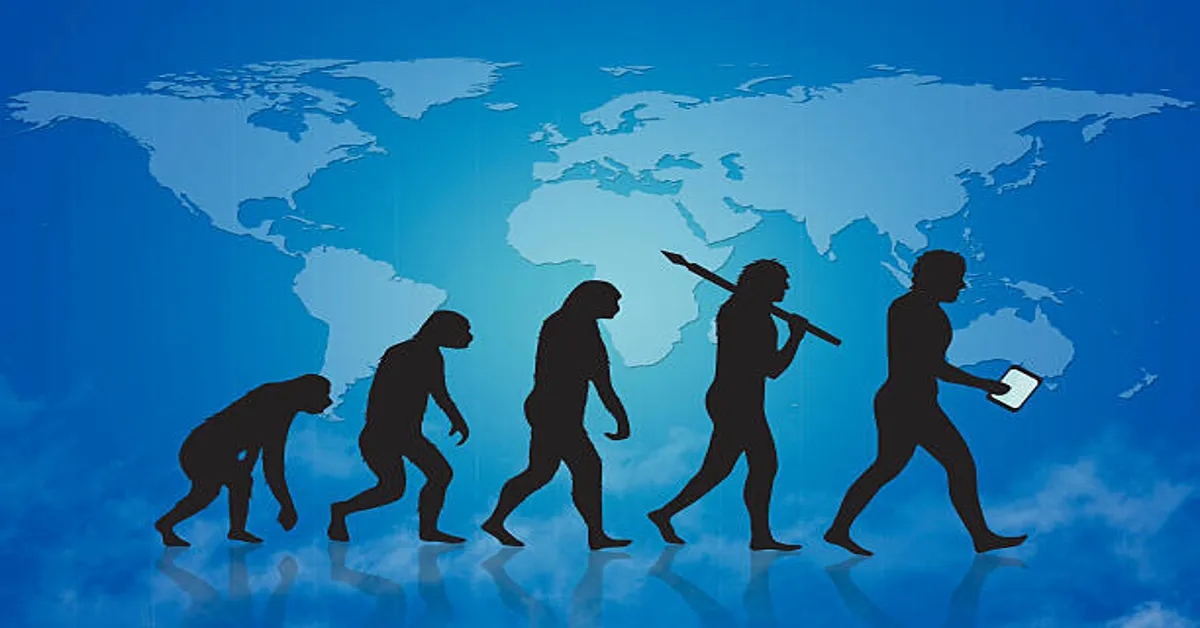In a world where new ideas, models, and ideologies are constantly shaping the contours of global discourse, corpenpelloz emerges as a unique conceptual framework that blends corporate evolution with socio-cultural transformation. Though the term may seem abstract at first glance, a deep dive into its philosophy reveals a multidimensional perspective that connects organizational dynamics with broader systemic shifts in human behavior, innovation, ethics, and economics.
Corpenpelloz is a theoretical and functional framework that seeks to describe how collective systems—especially those centered around institutions, organizations, or communities—evolve organically when exposed to sustained pressures of innovation, accountability, and socio-cultural alignment. At its core, the concept seeks to answer a fundamental question: How do structured systems adapt in real-time to rapid global transformations while preserving their foundational purpose and identity?
This article breaks down corpenpelloz in a comprehensive and multi-perspective manner—tracing its hypothetical origin, its philosophical underpinning, practical applications, theoretical relevance, and the potential it holds for shaping future governance, leadership, and social collaboration.
The Etymology and Conceptual Genesis of Corpenpelloz
The term corpenpelloz is derived from three linguistic roots—corpen (a modified form of “corporate” or “corpus”), pell (from “propel” or “pulse”), and the suffix -oz, a stylization that denotes dynamic fluidity and adaptive continuity. Hence, corpenpelloz metaphorically symbolizes “the pulse of evolving corporate or collective bodies.” It is a neologism that describes the rhythm of transformation experienced by formal systems under pressure to innovate, integrate, and impact.
The birth of the concept can be imagined as a reaction to the stagnation observed in rigid systems—be they bureaucratic, academic, economic, or political—where adaptation is often slow and misaligned with grassroots movements or technological leaps. Corpenpelloz posits that every system has an inherent ability to evolve like an organism, but only if it identifies its dynamic core pulse—the pelloz—and leverages it across its decision-making, design thinking, and social responsibility models.
Philosophical Framework of Corpenpelloz
At the philosophical level, corpenpelloz blends the principles of organic systems theory, decentralized intelligence, and evolutionary ethics. It challenges traditional hierarchical models where decisions cascade top-down and promotes a decentralized, nodal approach—where influence moves outward like ripples in a pond.
The core philosophical tenets of corpenpelloz include:
- Interconnected Emergence: Systems grow not in isolation but in response to their interconnected environment. Corpenpelloz models suggest that institutions that stay siloed cannot experience sustainable innovation.
- Reflexive Identity: Entities must continually reassess their identity. A corpenpelloz-aligned system would create mechanisms to reflect, respond, and reformulate its purpose without losing coherence.
- Temporal Fluidity: Static time-bound strategies are replaced by fluid frameworks that allow real-time recalibration. This concept becomes critical in digital governance, real-time policy making, and crisis leadership.
- Value-driven Adaptation: Unlike mere adaptability, corpenpelloz emphasizes ethically grounded transformation. Adaptation without moral compass leads to short-term gains but long-term decay.
Structural Elements of a Corpenpelloz System
To apply corpenpelloz in practical or organizational environments, we must break it down into its structural dimensions. These elements can serve as diagnostic tools or design blueprints for system transformation.
1. Pulse Nodes
Pulse nodes are decision points or influence centers within a system. In corpen pelloz theory, these are identified through qualitative metrics like trust, agility, and communication speed. Unlike traditional organizational charts, pulse nodes aren’t about hierarchy but about impact potential.
2. Feedback Architecture
Corpenpelloz mandates that every evolving system must build robust feedback loops—not just surveys or reviews, but systems that reward input, reflect insight, and lead to visible change. This concept aligns with ideas like “circular feedback design” or “resonance architecture.”
3. Innovation Rhythms
Rather than sporadic innovation sprints or reactive overhauls, corpenpelloz promotes rhythmic, seasonal innovation patterns. A company, for example, might adopt quarterly value audits instead of annual performance reviews.
4. Ethical Anchors
Every corpen pelloz system should define its ethical non-negotiables. These become the “anchoring constants” amid all transformation. Without anchors, the system risks becoming chaotic under the guise of adaptability.
Corpenpelloz in Practice: Real-World Application Scenarios
Though theoretical, corpen pelloz can be illustrated through plausible application examples across different sectors. Let’s explore how it can reshape various domains:
1. Corporate Governance and Strategy
In traditional boardrooms, decisions often revolve around shareholder interests. A corpen pelloz-driven board would redefine KPIs to include community value, ecological balance, and innovation sustainability. For example, a tech firm might use corpen pelloz matrices to decide whether a new product aligns with long-term planetary health, employee growth, and data ethics.
2. Educational Institutions
Schools and universities tend to follow fixed curricular and administrative models. A corpen pelloz framework could lead to curriculum that evolves based on real-time global needs, with student feedback shaping faculty evaluation and course offerings. Think of a university that reimagines its structure every semester through student-societal symbiosis.
3. Public Policy and Urban Planning
Cities operating under corpen pelloz would embed adaptability in infrastructure design—like transport systems that reconfigure based on daily behavioral data, or policies that evolve based on community-led data models.
4. Healthcare and Medical Systems
Hospitals could use corpen pelloz to decentralize care, with wearable tech and AI-driven diagnostics acting as pulse nodes. Instead of annual budgets, funding could adjust monthly based on patient outcomes, ethical equity metrics, and tech impact analyses.
Socio-cultural Impact of Corpenpelloz Thinking
Corpenpelloz is not merely institutional; it also suggests a new way of being. In societies increasingly fragmented by digital silos, echo chambers, and hyper-individualism, corpen pelloz calls for collective reflexivity—a practice of continuous awareness about our societal direction, inclusive of marginal voices.
This collective intelligence dynamic means citizens are not just passive voters or consumers, but active contributors in shaping public discourse, economic trends, and technological ethics.
Some projected social impacts include:
- Greater civic participation in governance through decentralized public forums.
- Restorative justice models that evolve from community feedback.
- Deconstruction of elite knowledge silos, promoting peer-to-peer learning platforms.
Challenges in Implementing Corpenpelloz Models
Despite its idealism, corpen pelloz is not without challenges:
- Resistance to Decentralization: Power structures are inherently conservative. Moving from central command to pulse-based influence models threatens traditional authority.
- Data Overload: Real-time feedback and adaptability demand massive data intake, which can be overwhelming or manipulated if not ethically guarded.
- Cultural Variability: What works as corpen pelloz in one culture may be rejected in another due to norms, values, or governance systems.
- Implementation Lag: Conceptual alignment doesn’t always translate to practical change. Corpen pelloz needs both technological infrastructure and philosophical commitment to be actualized.
Future Outlook: Corpenpelloz in the Next Decade
As AI, biotechnology, climate shifts, and decentralized economies reshape our world, corpen pelloz offers a compass for navigation. Its principles could be embedded in:
- Decentralized autonomous organizations (DAOs) that align blockchain with ethical pulse governance.
- Quantum leadership training programs that develop reflexive leaders able to sense and respond to shifting social dynamics.
- Post-capitalist economic models where value isn’t only monetary but measured in community well-being, biodiversity, and emotional intelligence.
By 2035, we could see global frameworks rooted in corpen pelloz principles governing data rights, digital citizenship, and intergenerational equity.
Conclusion: Why Corpenpelloz Matters
Corpenpelloz is more than a theory—it is a mindset shift. In an era defined by volatility, uncertainty, complexity, and ambiguity (VUCA), rigid systems break. Only those with internal pulsation—the ability to feel, adapt, reflect, and realign—will thrive.
For individuals, it means living with awareness and adaptability. For institutions, it means embracing feedback, ethics, and evolution. For societies, it offers a pathway to balance progress with purpose.
Corpen pelloz challenges us to move from systems of control to systems of collaboration, from authority hierarchies to influence ecosystems, and from reactive strategies to reflexive visions. It’s a call to action for conscious evolution—one pulse at a time.
ALSO READ: WhyChoosePro.com: Making Smart, Confident Choices in a Professional World
Frequently Asked Questions (FAQs)
1. What is the main idea behind corpenpelloz?
Corpenpelloz is a conceptual framework that focuses on how structured systems, such as organizations or societies, adapt dynamically through ethical reflection, decentralized decision-making, and continuous feedback mechanisms.
2. Is corpenpelloz applicable only in corporate environments?
No, corpenpelloz can be applied in various contexts including education, governance, healthcare, urban planning, and social innovation. Its principles are universally adaptable wherever transformation is needed.
3. How is corpenpelloz different from traditional adaptability?
Unlike reactive adaptation, corpenpelloz emphasizes proactive, value-based evolution grounded in ethical anchors and societal feedback, ensuring that transformation is sustainable and inclusive.
4. What are the key components of a corpenpelloz-aligned system?
The main components include pulse nodes (influence centers), feedback architecture, innovation rhythms, and ethical anchors that collectively enable dynamic and conscious evolution.
5. Can individuals apply corpenpelloz in their personal lives?
Yes, individuals can embrace the corpenpelloz mindset by practicing self-reflection, ethical decision-making, and active engagement with their communities to contribute to meaningful collective transformation.









